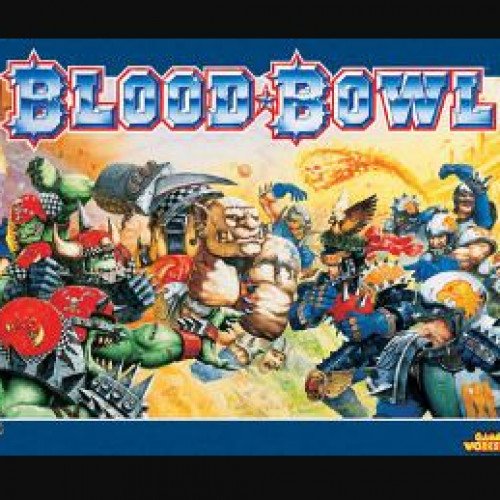BLOOD BOWL VS SÁHKKU

BLOOD BOWL
Blood Bowl is a fantasy football game created by Jervis Johnson for the British games company Games Workshop as a parody of American Football. The game was first released in 1986 and has been re-released in new editions since. Blood Bowl is set in an alternate version of the Warhammer Fantasy setting, populated by traditional fantasy elements such as human warriors, goblins, dwarves, elves, orcs and trolls. In late 2016, Games Workshop released a new version of the game - the first in 22 years. It featured a double sided board and new plastic miniatures. In August 2020, Games Workshop announced the latest version of the game, titled Blood Bowl Second Season Edition, which features a significant overhaul of the rules. This version was released in November 2020 and included miniatures for two teams and referees, a board (pitch), templates and the rule book. The rule book was also available separately, both physically and digitally. Cyanide Studio confirmed that the next videogame adaptation, Blood Bowl 3, would use the new ruleset. Blood Bowl is a two-player, turn-based board game that typically uses 28 mm miniatures to represent a contest between two teams on a playing field. A board containing a grid overlay represents the field. Using dice, cards, and counters, the players attempt to score higher than each other by entering the opponent's end zone with a player who possesses the ball. The "Blood" in Blood Bowl is represented by the violent actions available to players. Game play is based on a hybrid of American Football and Rugby. Players may attempt to injure or maim the opposition in order to make scoring easier by reducing the number of enemy players on the field.
Statistics for this Xoptio

SÁHKKU
Sáhkku is a board game of the Sami people. The game is traditional among the North Sámi, Skolt Sámi, Inari Sámi and Lule Sámi but may also have been played in other parts of Sápmi. Sáhkku is a running-fight game, which means that players move their pieces along a track with the goal of eliminating the other players' pieces. Many different variants of sáhkku have been played in different parts of Sápmi. The oral transfer of the sáhkku rules between generations was largely broken off during the 1900s (see Sáhkku today). A few of the local variants have survived into our time, other local variants have been reconstructed based on a combination of memories and written sources, and for some places only fragments of the local rules are known from old documents. A sáhkku board (sáhkkufiellu, bircunfiellu or sáhkkulávdi) can traditionally be designed in a number of different ways. At its simplest, a sáhkku board has three parallel rows of short lines, and the pieces are placed on these lines. The lines are called sárgat (one sárggis) in Sámi. It is common to draw the short lines as vertically connected to each other, so that the board appears to consist of just one row of very long lines, but the game is still played as if these were three separate rows of short lines. Such boards often also have three horizontal lines intersecting the vertical lines in order to illustrate that the lines are still in practice divided into three parallel rows. Some boards feature only a central horizontal line crossing the connected vertical lines, but the game is still played as if there were three rows of short lines. A special type of sáhkku board is the so-called Návuotna board which has three rows of squares (ruvttat, lanjat) instead of lines. The central line/square of the middle row, sometimes referred to as "the Castle", is indicated by a sáhkku-symbol ("X"), sun symbol, or other ornament.